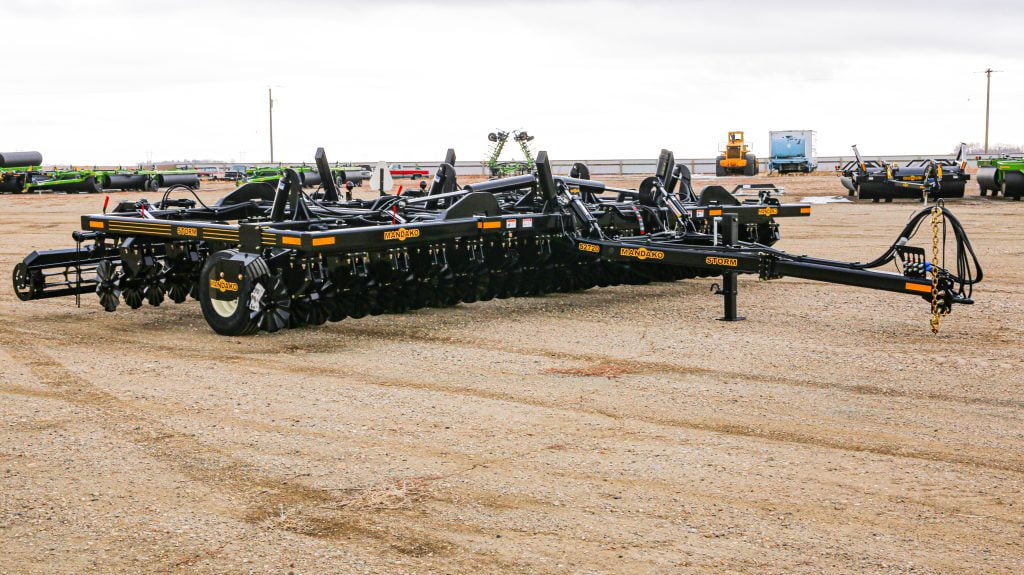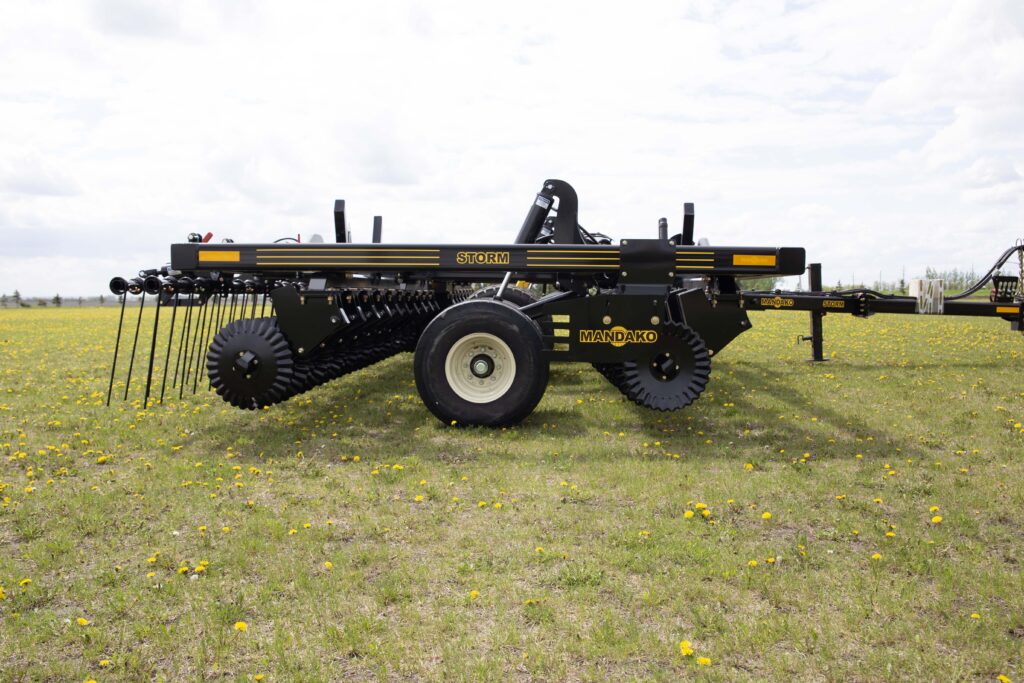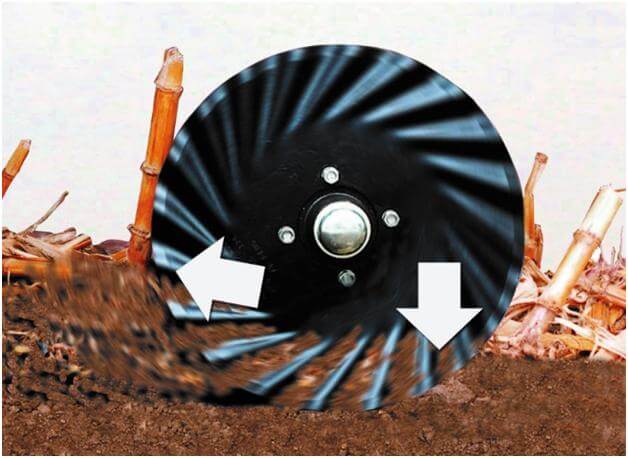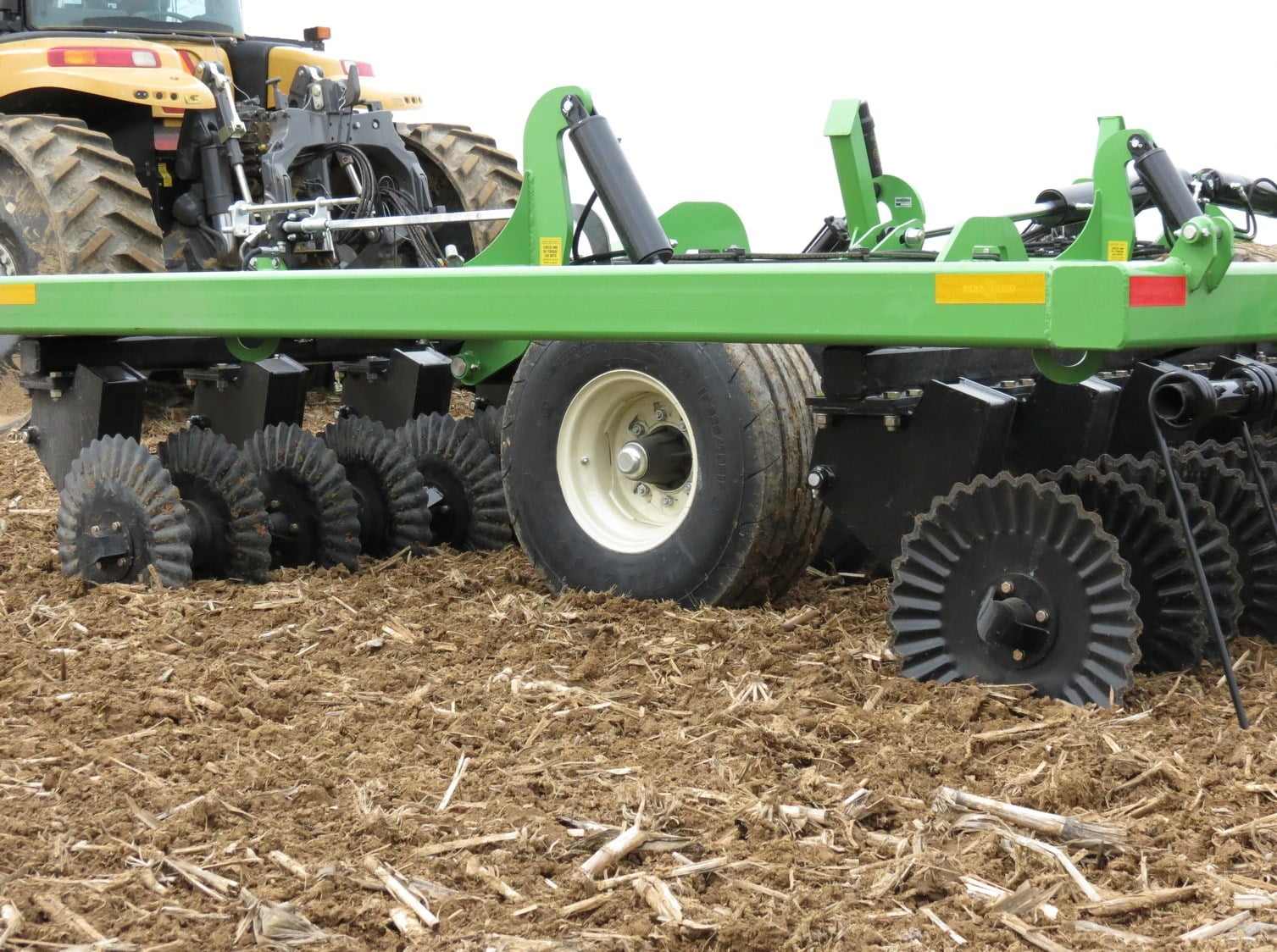
Soil retains moisture and serves as a nutrient medium for plants, making proper, minimal-impact soil cultivation essential. This understanding led to the invention of vertical tillage, which is particularly popular in Canada. Special equipment such as plows, disc chisels, harrows, blades, and discs are used for this method. Today, we will discuss disc chisel plows, detailing their capabilities and characteristics.
Description of a Disc Chisel
The demand for disc chisels for sale is high due to their functionality and ease of use. This equipment is suitable for deep, no-till soil cultivation on farms of various scales. The disc chisel processes all soil types and requires less horsepower. This tool does not completely cut through the soil layer. Unlike plowing, chiseling does not turn the soil layers over, so they remain unmixed.
Working with heavy stubble is effortless with a 7-shank disc chisel. All you need is a tractor and a mounted harrow. Using a modern disc chisel plow mitigates soil degradation and erosion without destroying deep soil layers. It operates in a way that significantly reduces soil moisture evaporation.
Transitioning to resource-saving technologies means opting for a disc chisel plow rather than a traditional one for deep tillage. This is especially important in regions where the soil is naturally not very fertile, rocky, or sandy. While fertilizers are important, without sufficient moisture and sunlight, seeds won’t germinate.
Main Components and Construction of a Disc Chisel
A disc chisel plow consists of the following parts:
- Stand
- Disc
- Hub
- Coulter (foot)
- Serviced bearing assembly
- Self-cleaning packing roller
Key Functions and Tasks of a Disc Chisel
A disc chisel:
- Cultivates the soil
- Loosens the soil
- Breaks up dense layers
- Prepares the soil for planting
You only need to ensure that the power requirements of the disc chisel match your goals, tasks, and challenges, as well as the size of the plot, soil characteristics, and many other factors. Mandako consultants are always ready to assist and provide advice.
Advantages of Using a Disc Chisel
A disc chisel:
- Improves soil properties
- Increases water permeability
- Acts as the best erosion prevention
- Is effective for any soil type
Scenarios for Using a Disc Chisel
A disc chisel is highly versatile and can be effectively utilized in both spring and autumn for soil cultivation. In the spring, it helps prepare the seedbed by breaking up compacted soil, improving aeration, and ensuring that the soil is in optimal condition for planting. This process allows for better root penetration and moisture retention, which are crucial for the early stages of plant growth.
In the autumn, the disc chisel is used to manage post-harvest residues and prepare the fields for the winter season. By loosening the soil and incorporating organic matter, it enhances soil structure and fertility for the next planting cycle. This dual-season use ensures that the soil remains healthy and productive throughout the year, creating ideal conditions for crop growth and maximizing yield potential.
How to Choose a Disc Chisel Plow
Firstly, note that a disc chisel plow is different from others: it does not destroy the soil as much as other types do. You need to consider:
- Processing speed and power requirements of the disc chisel
- Fuel consumption (the more economical, the better; budget must be considered)
- Soil type: not every plow is suitable for rocky soil, and for sandy soil, you will need a wide-grip type
You can effectively utilize a disc chisel for soil cultivation in both spring and autumn due to its high versatility. You need a good, powerful tractor with reliable attachments, sharp discs, and alloy steel blades. One plow is not enough; all these components work together.
Choosing the right equipment is crucial for efficient farming operations. Our Mandako STORM is an ideal choice because our engineers are constantly working on improving its design. With its advanced features and robust construction, the STORM ensures optimal performance and durability. Consult our specialists for tailored advice and professional part selection, ensuring minimal maintenance concerns. Our equipment is known for its reliability and long service life, although regular technical maintenance is still required over time.

FAQ:
1. Why is soil health important in modern farming?
Soil health is crucial because it retains moisture and provides nutrients necessary for plant growth. Proper soil cultivation, like using a disc chisel, ensures the soil remains productive and sustainable for long-term agricultural success.
2. How does a disc chisel differ from traditional plows?
Unlike traditional plows, a disc chisel does not completely cut through or turn over the soil layers. This helps maintain soil integrity, reduce erosion, and improve water retention.
3. What are the key components of a disc chisel plow?
A disc chisel plow consists of several main parts, including the stand, disc, hub, coulter (foot), serviced bearing assembly, and a self-cleaning packing roller. These components work together to effectively cultivate the soil.
4. How do I choose the right disc chisel plow for my farm?
When choosing a disc chisel plow, consider the processing speed and power requirements, fuel consumption, and the type of soil on your farm. Additionally, ensure you have a powerful tractor with reliable attachments and sharp discs made from alloy steel. For the best performance, consult specialists who can help you select the right equipment for your needs.
5. Why is the Mandako STORM an ideal choice for modern farming?
The Mandako STORM is an ideal choice because it incorporates advanced vertical tillage technology designed to meet contemporary agricultural demands. Our engineers continuously improve its design, ensuring superior performance, adaptability to changing field conditions, and long-term durability. This makes it a reliable partner for achieving sustainable farming practices.
Published Date: June 5, 2024 Estimated Reading Time: 9 minutes











